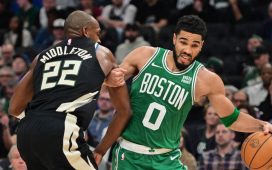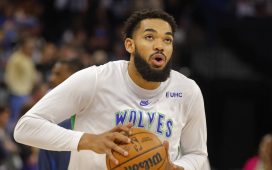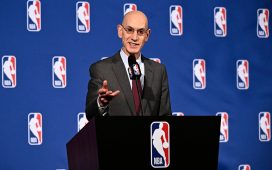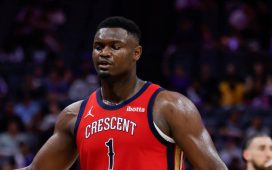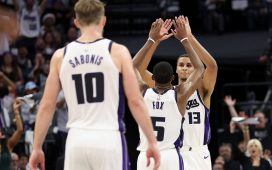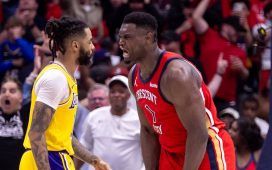The commercial breaks were a mixed blessing — a respite for the broadcasters, whose own emotions understandably kept tumbling out, but a lousy time to peddle light beer, and an inconvenient reminder that in the absence of news about Hamlin’s condition (which would not be forthcoming anytime soon), and in the absence of an actual football game (which no decent person was in the mood to resume), this advertising money was the only reason the cameras were still rolling. We were, in other words, watching a young man’s near-death be commodified in real time. The second time Buck repeated some variation on the phrase “there’s nothing left to say at this point,” it sounded less like a directive to the production truck — let someone else flail for a while — and more like a reproof to the audience. Why are you still watching? Why haven’t you changed the channel? What kind of person still cares about a football game now?
More on Damar Hamlin’s Collapse
This was uncharted territory, the guy on the television more or less telling us to turn off the television. The very program itself was having an existential crisis. There was no game to show, no update on Hamlin’s condition to share, no cutting to black. The moment Joe Buck said “CPR,” “Monday Night Football” was over. Only it couldn’t end.
Just 250 miles across Ohio, in a different sports universe separated only by a few TV channels, Donovan Mitchell of the N.B.A.’s Cleveland Cavaliers was pouring in 71 points against the Chicago Bulls. It was the highest single-game total in 17 years, and it makes Mitchell one of only seven players in N.B.A. history to top 70. Mitchell is powerful and balletic, with a 6-foot-10 wingspan that has earned him the nickname Spida; the Cavaliers, thanks in large part to him, will most likely reach the playoffs for the first time since 1998 without LeBron James on the roster. On the emotional spectrum of sports fandom, Mitchell’s night was the polar opposite of the tableau in Cincinnati: jubilation in the stands, gobsmacked teammates on the bench, escalating delirium in the announcers’ voices. When the Cavaliers won, in overtime, Mitchell’s teammates kept drenching him with water bottles, as if to put out flames, and then they all posed together for a photo with the night’s hero.
This was all of the reasons we watch sports. But it didn’t merely happen on the same night as Hamlin’s injury; the two events unfolded in lock step, over the same hour of real time. On social media, many fans experienced both dramas at once. As I traded texts with friends about Mitchell’s swelling point total — 58! 66! 69! 70! — I kept toggling apps and scrolling through Twitter, where stats about the basketball game sat alongside uninformed speculation about blunt-impact cardiac arrhythmias and ghouls blaming Covid vaccinations for Hamlin’s collapse. This wasn’t just any regular-season N.F.L. game either: The Buffalo Bills and the Cincinnati Bengals are Super Bowl contenders, and their matchup had major playoff implications, and it was “Monday Night Football,” a multibillion-dollar American institution. Then, suddenly, by swift consensus, the game didn’t matter at all. It was almost generous of Skip Bayless, the Elon Musk of sports trolls, to step up and tweet a take about not postponing the game abominable enough to give the entire platform someone to unite against in disgust. (He even managed to offend Shannon Sharpe, the ex-N.F.L. tight end with whom Bayless hosts Fox Sports 1’s “Undisputed,” enough for Sharpe to stand him up for their broadcast the next morning.)
But social media also created avenues for catharsis. Hamlin was an unheralded sixth-round pick coming out of the University of Pittsburgh, near his hometown, McKees Rocks, Pa. He cracked the Bills’ starting lineup only in September, after the first-string safety Micah Hyde suffered a neck injury and had to leave the stadium in an ambulance. In 2020, Hamlin set up a GoFundMe to support a toy drive back home in McKees Rocks, and as of that Monday afternoon, just before the game, he’d raised about $2,500. By Friday, the helplessness we all seemed to be feeling on Hamlin’s behalf had poured more than $8 million into his toy drive.

